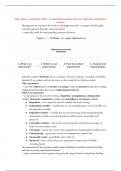Samenvatting
Samenvatting van alle required readings + readings hoorcollege en werkgroep
Alle artikelen die tijdens de hoorcolleges, werkgroepen en verplichte artikelen uitgebreid samengevat. Inclusief alle relevante foto's uit de artikelen.
[Meer zien]




